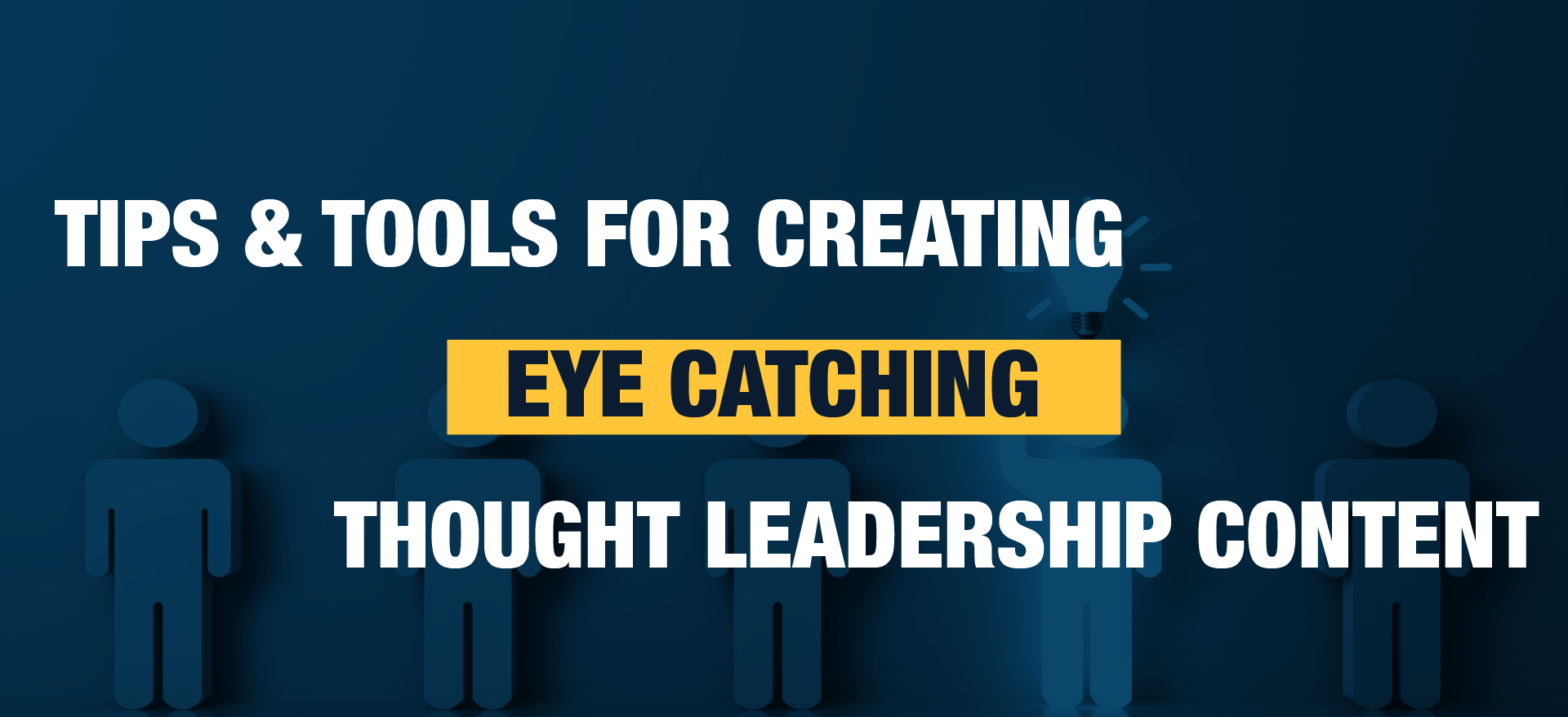Every business wants to be recognized as a thought leader in their space. Sharing thought leadership content can be an incredibly effective avenue to differentiate your business from the competition, establish credibility, build brand reputation, and attract new customers. To create a top-quality thought leadership article means that you need to create an experience for your reader. In most cases, just putting text onto the page is not going to be enough to effectively communicate your message and hook-in your audience. This is where supportive and eye-catching visuals come in.
Including outstanding visuals in your thought leadership articles can help to enhance overall message comprehension, increase engagement, improve brand recognition and better communicate complex ideas to your audience. Unless you are a graphic designer, creating these visuals is going to feel like a daunting and unfamiliar task. The truth is, this process can be far easier than you might think. We put together a list of our top tips and tools to help you easily create stunning visuals for your next thought leadership article.
Tips
Understand Your Audience:
Before creating visuals, consider your target audience and their preferences. Consider what forms of content they might be engaging with on other platforms. Are they more likely to be receptive to a clean and clinical looking visual or would they prefer something more abstract. Write down some of those audience traits and tailor your visuals to match their interests and communication style.
Use Data-driven Visuals:
Sometimes data is better communicated through a visual medium rather than text. Incorporate charts, graphs, and infographics to present data in a visually appealing and easy-to-understand manner. This helps readers grasp complex information quickly and efficiently.
Keep It Simple and Focused:
Visuals should support the main message of your thought leadership article. Avoid clutter and unnecessary images that might distract or confuse readers.
Choose Appropriate Visuals:
Select visuals that align with your content and your brand. Your visuals should effectively convey your message and draw your audience’s attention without being too distracting or shocking. If you are unsure about whether a particular visual fits with the rest of your presentation, it doesn’t hurt to ask a peer to review the piece before publishing.
Stay On Brand:
Branding is a very important component of your visuals. Use consistent branding elements such as colors, fonts, and styles throughout your visuals. This helps create a cohesive and professional look as well as making your content more identifiable to readers.
Tools
Canva:
Canva is a popular online design tool that offers a wide range of templates, fonts, icons, and images. It is incredibly user-friendly and allows you to create professional-looking visuals even if you have little design experience. For most users, the free version of Canva is more than enough to get you started.
Google Drawings:
Google Drawings is a free, web-based tool that allows you to create simple diagrams, charts, and illustrations. It’s easy to use and integrates seamlessly with other Google services. This may be a good solution for users wanting to easily collaborate with others.
PowerPoint or Keynote:
For most of us, Powerpoint and Keynote are familiar platforms and can be great starting points to easily create clean, detailed visuals. These platforms provide built-in design features and easy-to-use tools for creating a variety of different graphics and images.
Pablo by Buffer:
Pablo is a simple online tool by Buffer that allows you to create social media visuals with text overlays. It’s great for quickly designing quote graphics or images for sharing on social platforms.
Piktochart:
Piktochart is a platform specifically designed for creating infographics, presentations, and reports. It provides a variety of customizable templates and visual elements, making it easy to create visually engaging content.
Visme:
Visme is an all-in-one visual content creation tool that allows you to design presentations, infographics, charts, and reports. It offers a drag-and-drop interface and a wide range of templates and assets to choose from.
Infogram:
Infogram is a tool specifically designed for creating interactive charts, infographics, and maps. It offers a user-friendly interface and a variety of customization options.
Closing Thoughts
Making eye-catching thought leadership content is easier, less expensive and more accessible than ever. Hopefully, with these tips and tools, your business can experience a new level of confidence creating impactful graphics, videos and images for your next blog or social media post. If you are looking to take things up a notch, make sure to reach out to us and learn how our talented designers, editors and animators can help you to create the perfect visuals for your next big campaign.

